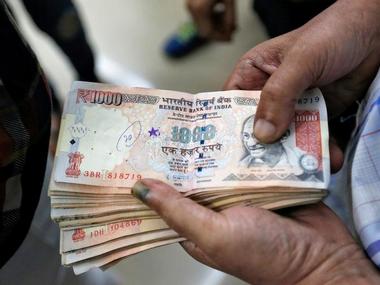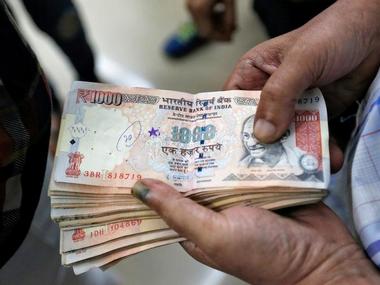At a seminar on 10th January 2016 organised by the Pahle India Foundation (PIF) for gathering inputs and suggestions for the forthcoming post-demonetisation Budget , the virtually unanimous view was that the Budget cannot be ‘business as usual’. It will have to make some radical departures to prevent the economy getting into a tail spin in the wake of 86 percent of the liquidity having been sucked out of the system. The finance minister will do well to recognise some of the possible negative effects of demonetisation and take steps to minimise its negative impacts and enhance the adoption of digital currency and transactions. In this context, the importance of significant reforms of the direct tax regime and administration received major emphasis. Direct tax reforms should serve the triple objective of: (i) preventing the emergence of ‘tax terrorism’ by improving transparency and reducing official discretion. (ii) Identifying all those who have tried to launder their ‘illegal incomes’ through depositing them in bank accounts and exacting the penal tax charges from them. (iii) rationalizing and simplifying the tax structure by eliminating exemptions, cesses and surcharges and simultaneously lowering both personal and corporate income tax rates. (iv) continuing with some restraint on cash withdrawal from banks to encourage digital transactions. [caption id=“attachment_3164752” align=“alignleft” width=“380”]  Representational image. Reuters[/caption] More specifically, this is the time for the Finance Minister to act on his promise of bringing down the corporate tax rate to 25 percent from the current 33.5 percent. He would surely know that given the large number of exemptions and other provisions, effective corporate income tax incidence is no more than 23 percent. (This is simply estimated by dividing the total pre-tax profits by the quantum of taxes actually paid). Thus, if he does remove all the exemptions, that only make life difficult for the entrepreneurs and exponentially raises costs of litigation, he will not really suffer a revenue loss. The two percentage point cut in the tax rate will most likely be more than made up by an expanded tax net. The Laffer curve will surely become operative. The highest rate of personal income tax at 33 percent rate (30 percent plus cesses) presently becomes applicable at an annual income of Rs 10 lakh. This is seen as far too high by middle-class professionals and small traders and entrepreneurs and encourages evasion. The fact that as few as 24 lakh individuals declare their income as above Rs 10 lakh is ample evidence of widespread tax avoidance. Therefore, this highest rate of personal income tax should become applicable at a significantly higher income level to encourage compliance and expand the personal income tax net much wider. My suggestion would be to apply this highest rate of 30 percent at an income level of perhaps Rs 24 lakh per annum. This would both expand the tax net and provide a consumption boost, keenly needed in the post demonetization period. However, one of the most important requirement at this time is to re-invigorate investment activity in the economy. Private investment is at an all time low with private fixed capital formation in the negative territory and aggregate gross fixed capital formation also showing a decline in the quarter ending October 2016. Latest data shows that growth in non-food credit off-take from commercial banks at about 5 percent is at its lowest level for the last 60 years. Private investment activity, which started to plummet during the last two years of the UPA government, due to scams and policy paralysis, has now turned turtle. It needs to be revived urgently and significantly. The reduction in corporate income tax and related rationalization will surely help perk up investor sentiment and could reverse the declining investment cycle. Along with this measure, following steps will also help: • Not tinker at this stage with long term capital gains tax as it will discourage savings and further sour investor sentiment. • Financial sector regulation should move from being entity based to activity based regulation - this will relieve NBFCs, which are major source of finance for SMEs from over regulation. • The tax regime for the leasing industry also needs substantial simplification and rationalization as the present tax regime has effectively killed the industry. Revival of leasing will boost investment activity. • Many SMEs have reportedly deposited relatively higher amounts in their bank accounts post demonetisation, relative to their declared revenues and profits. Entry of these SMEs into the formal economy, which have hitherto been in the informal cash-driven sector, should be facilitated. They should certainly not be hounded by tax inspectors for extracting rents. Instead, commercial banks may consider raising their working capital limits in line with their higher deposits made after demonetisation. As mentioned earlier, private corporate investment has been exceptionally weak since 2012. To supplement measures to revive it, public capital expenditure and investment must be ramped up in 2017-18. This will certainly help to ‘crowd in’ private investment specially is higher public sector allocations are made to complete infrastructure projects that have stalled and have resulted in weakening of investment appetite in related sector. The finance minister will do well to announce an increase of at least 25 percent in public capital expenditure in 2017-18 over the revised Budget estimates for 2016-17. This will give a clear signal to all concerned that the Modi government is serious about expanding productive capacities in the economy and generate additional employment. The issue of available fiscal space invariably comes up in any discussion of ramping up public sector investments. Fiscal hawks should be aware that their stance could well have serious national security implications at the present conjuncture. Without massive increase in public investment there is very little chance of a pick-up in private investment. This would result in continued loss of jobs and rising social tensions and youth mobilisation by religious fundamentalists and sundry agitators. This could well spill out of hand and become a serious law and order situation that could engulf large states where there has been serious loss of employment in recent years. The finance minister has to take the necessary though difficult call between placating and pampering international credit rating agencies, with somewhat dubious credentials, against a rising storm of youth agitation fed by continued frustration of their exploding aspirations. The finance minister must surely recognise that in the absence of a strong economic recovery by March 2018, the BJP’s political fortunes in 2019 general elections could take a severe knock. Given the incredibly high stakes at this time, it will be politically and economically suicidal to not ramp up public investment and instead maintain the fiscal virtuosity by adhering to the targeted fiscal deficit at 3 percent of GDP for 2017-18. As I submitted to the N K Singh Committee, which should have surely submitted its report by now, fiscal deficit is a chimera which should be left well alone. Instead the target should be to bring revenue deficit down to zero as rapidly as possible. Every corporate and government desirous of pushing growth resorts to borrowing. And no credit rating agency worth its name, would object to that if the borrowing was used for expanding production capacities and raising productivity. Please Jaitley, do not succumb to threats either from fiscal hawks or rating agencies as these are paper tigers while the rising tide of youth anger is certainly not. Therefore and more specifically, the government should hugely ramp up its capital allocation for affordable and workers’ housing and establish a special task force to monitor the project’s execution in a tight deadline of 18 months. Along with higher resource allocation, surplus public sector land should be identified in each state and handed over for these projects for affordable and workers housing, for facilitating their timely completion. These projects would be publicly funded and supervised and privately executed. If efficiently implemented, this could recharge the economy as housing and construction have linkages with nearly 200 industries. These measures are needed in addition to the interest rate subvention that was announced by the prime minster on 31 December. Secondly, the Budget should announce the setting up of a ‘Special Fund’ to assist in the re-starting of stalled infrastructure projects. This should not either imply or be used for bailing out corporations with large outstanding debt. They have accumulated debt as a result of completely unacceptable risk taking behavior based on the assumption of ‘successfully gaming the system’ and continued greening of loans by commercial banks. These corporations are certainly not ‘too big to fail’ and in most cases have sufficient assets to liquidate their outstanding loans. Finally, the proposed National Infrastructure Investment Fund (NIIF), that has been long in the making, could also be directed to help in re-starting stalled projects. This initiative was announced more than two years ago and could have mobilised large volume of long-term credit for being used in infrastructure projects. Let’s hope that the forthcoming Budget will include an announcement of NIIF having received its first tranche of equity investment from a major sovereign or foreign pension fund seeking to ride the India opportunity. The Budget should convince them that the India opportunity has a robust prospect. (T_he writer is Founder Director Pahle India Foundation, Senior Fellow Centre for Policy Research, and author of the book ‘Modi and his challenges’_.) For full coverage of Union Budget 2017 click here .
Finance Minister Arun Jaitley will do well to recognise some of the possible negative effects of demonetisation and take steps to minimise their impacts
Advertisement
End of Article


)

)
)
)
)
)
)
)
)



